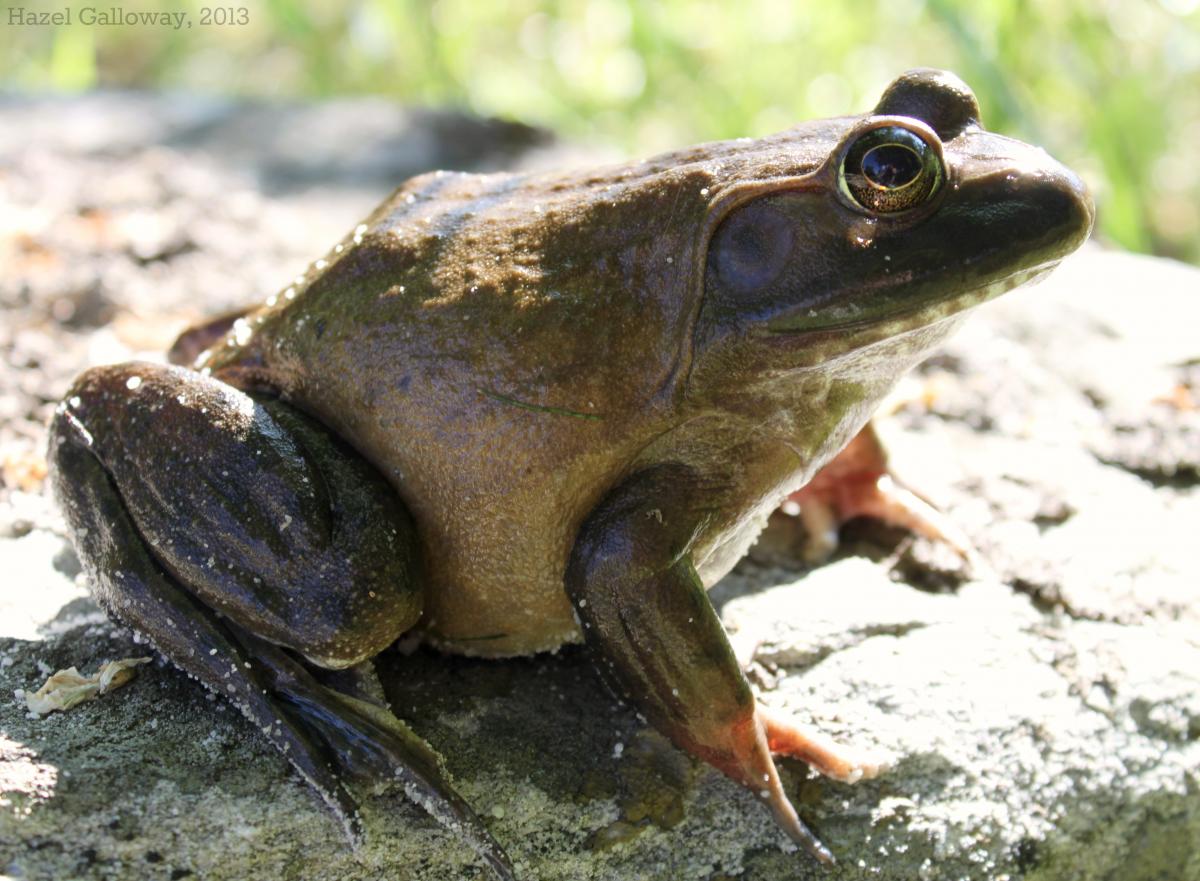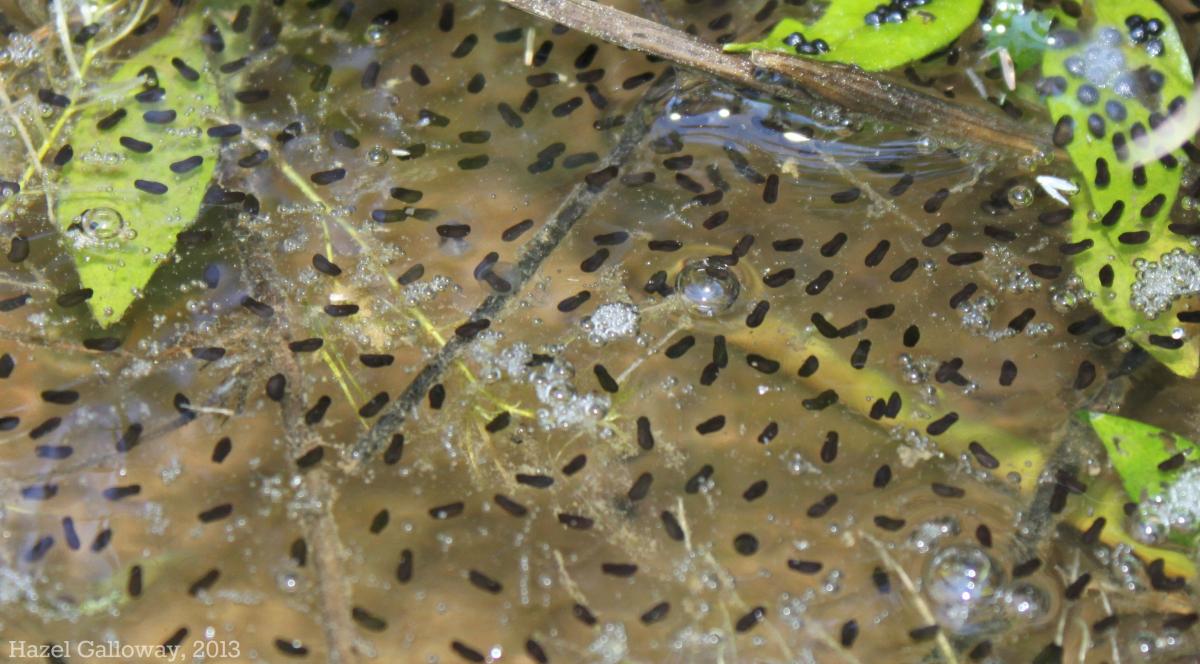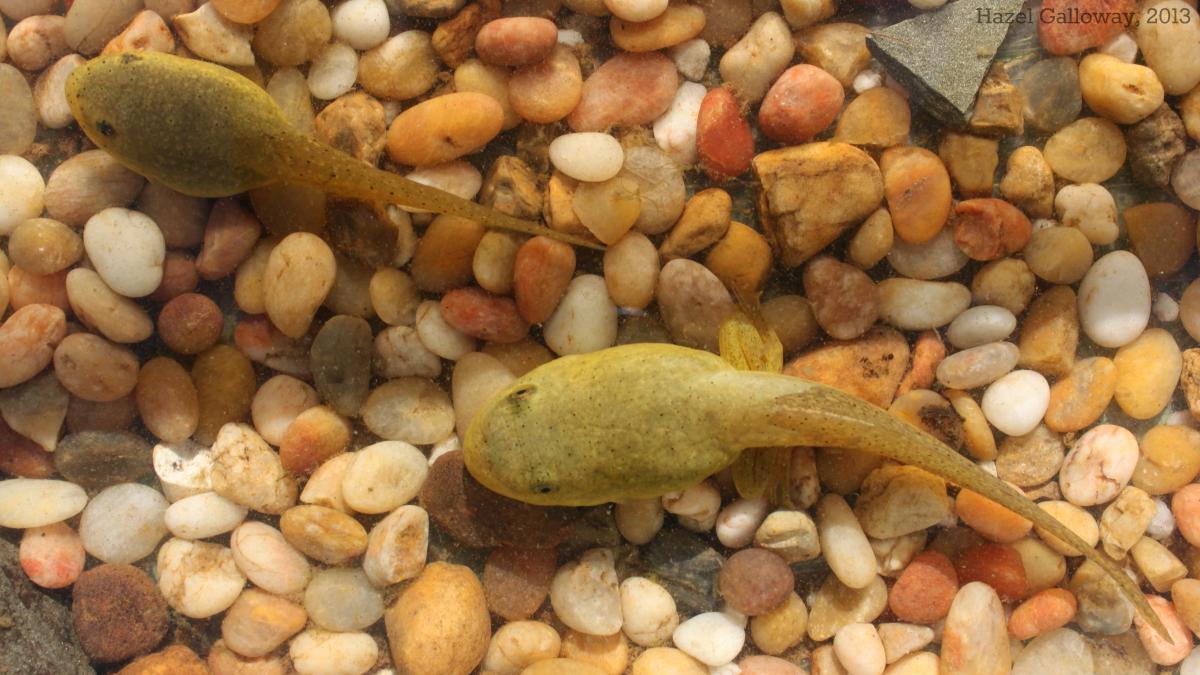 This behemoth clearly illustrates the size difference between the adult green frog and the adult American bullfrog—the largest frog in North America. At approximately 14 cm in length, this frog does not even approach the record length of 20.3 cm.
This behemoth clearly illustrates the size difference between the adult green frog and the adult American bullfrog—the largest frog in North America. At approximately 14 cm in length, this frog does not even approach the record length of 20.3 cm.
Bullfrogs are typically greenish to brownish with mottled backs and pale, mottled undersides. Unlike the green frog, the dorsolateral ridges end at the tympanum (the external ear of the mature frog visible as a darker ring below its eye) instead of continuing down its back. Discrimination between the sexes is made possible by examining the tympanum; in male frogs, it is much larger than their eye, while in females it is the same size or smaller.
Bullfrogs are mainly aquatic creatures and tend to dwell in permanent, still or slow-moving bodies of water. They prefer warm waters, often on pond borders or shallow rivers. The males are very territorial and aggressively guard their domains of up to 25 meters of shoreline by physically wrestling other males. During breeding season, which begins in the late spring or early summer, they can be heard over a kilometer away announcing themselves to females with a deep chug-a-rum, chug-a-rum.
Bullfrogs, as with all true frogs (ranids), fertilize the eggs externally. At some point during the breeding season, the mating female will deposit as many as 20,000 eggs inside a semi-transparent protective film at the same time as the male releases sperm into the water. In just 3-5 days, the fertilized eggs hatch and the tiny tadpoles emerge with gills and a tail. The tadpoles are independent from birth. They take anywhere between a few months to 3 years to transform into frogs, depending on temperature and other variables. After completely metamorphosing, they can take another 2 years to become sexually mature. Bullfrogs have lifespans of 7-9 years in the wild, although one captive specimen reached age 16. As they transform, adult bullfrogs lose their gills and must breathe air, although they are still mainly aquatic creatures. They spend the winter hibernating buried in the mud or in small cave-like structures that they construct.
Bullfrogs spend a great deal of time sitting and waiting to catch any prey that crosses their path. As with most ranids, they eat a wide variety of small aquatic and terrestrial animals like minnows, tadpoles, insects, worms, salamanders, etc. However, because of their great size, they are also capable of catching and eating small snakes, turtles, birds, and even bats. They are also cannibalistic and will eat one of their own when the opportunity presents itself. The tadpoles generally graze on aquatic plants. Although bullfrogs are highly desirable prey for everything from birds to turtles to raccoons, they are generally ignored by fish because of their bad taste.
Lithobates catesbeianus is native to most of the eastern United States, as far west as Wisconsin. However, its native range is now confused because of intentional or unintentional introduction to many western states, where it is driving many native species to extinction by outcompeting them for limited food resources. It has also been introduced to Europe, South America, and Asia, often because of its suitability to hunt for the frog leg market. As the bullfrog is somewhat resistant to the pathogenic chytrid fungus thought responsible for worldwide amphibian decline, it has served as an unfortunately effective carrier to infect populations of many species around the world.
This bullfrog is an adult female, found on the lawn near the edge of the pond last night. The tadpoles and eggs were collected in the pond.
Article by Hazel Galloway
Sources:





